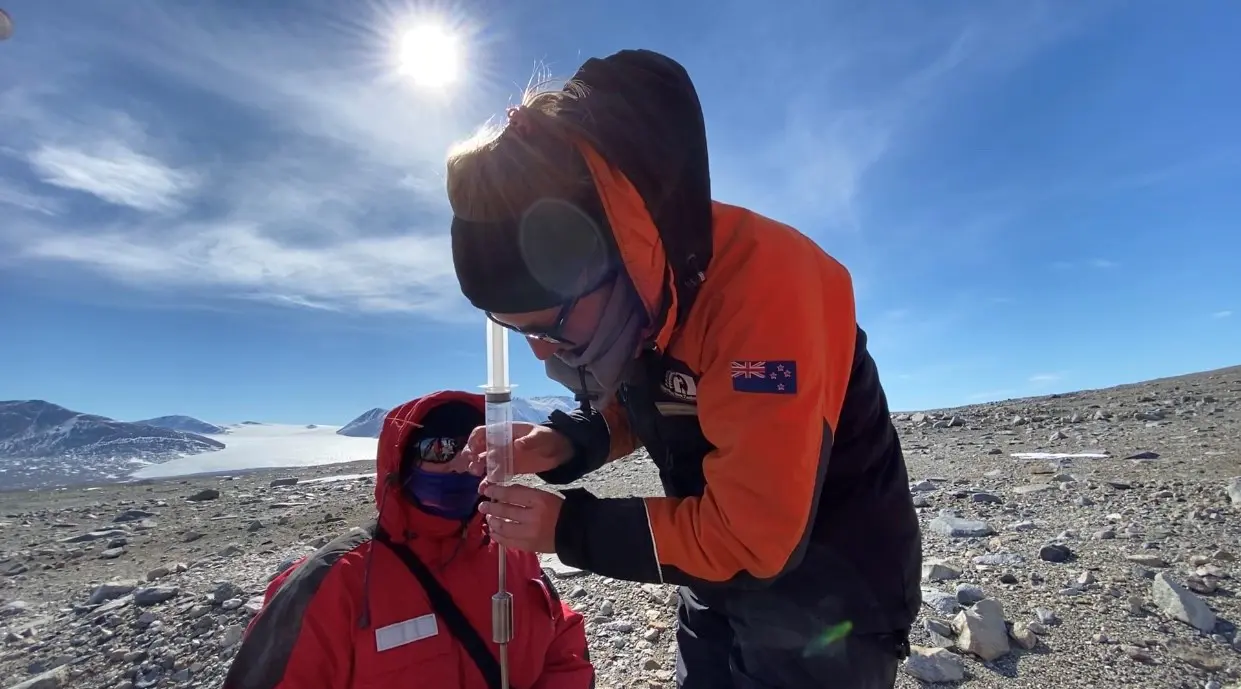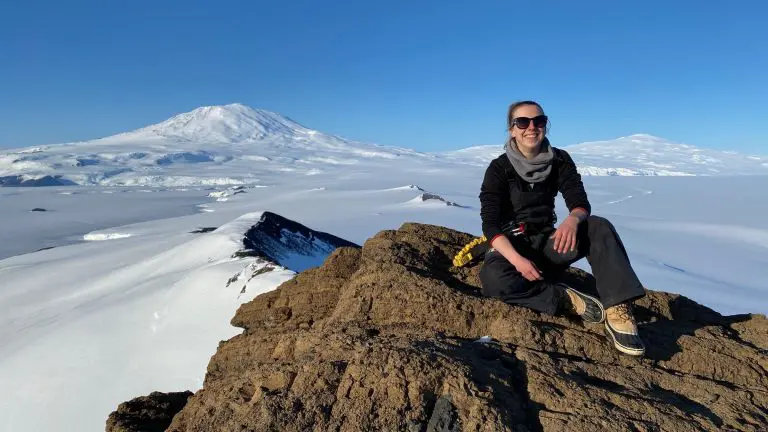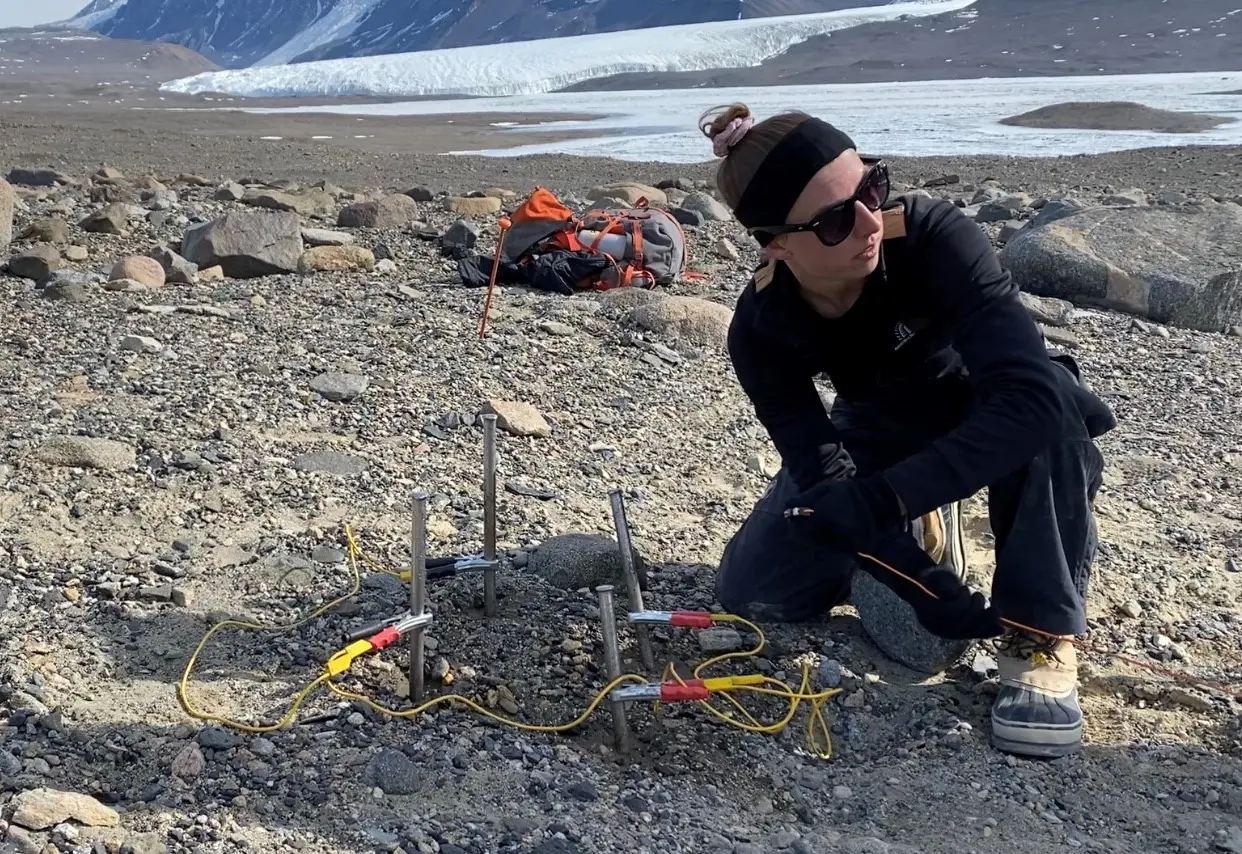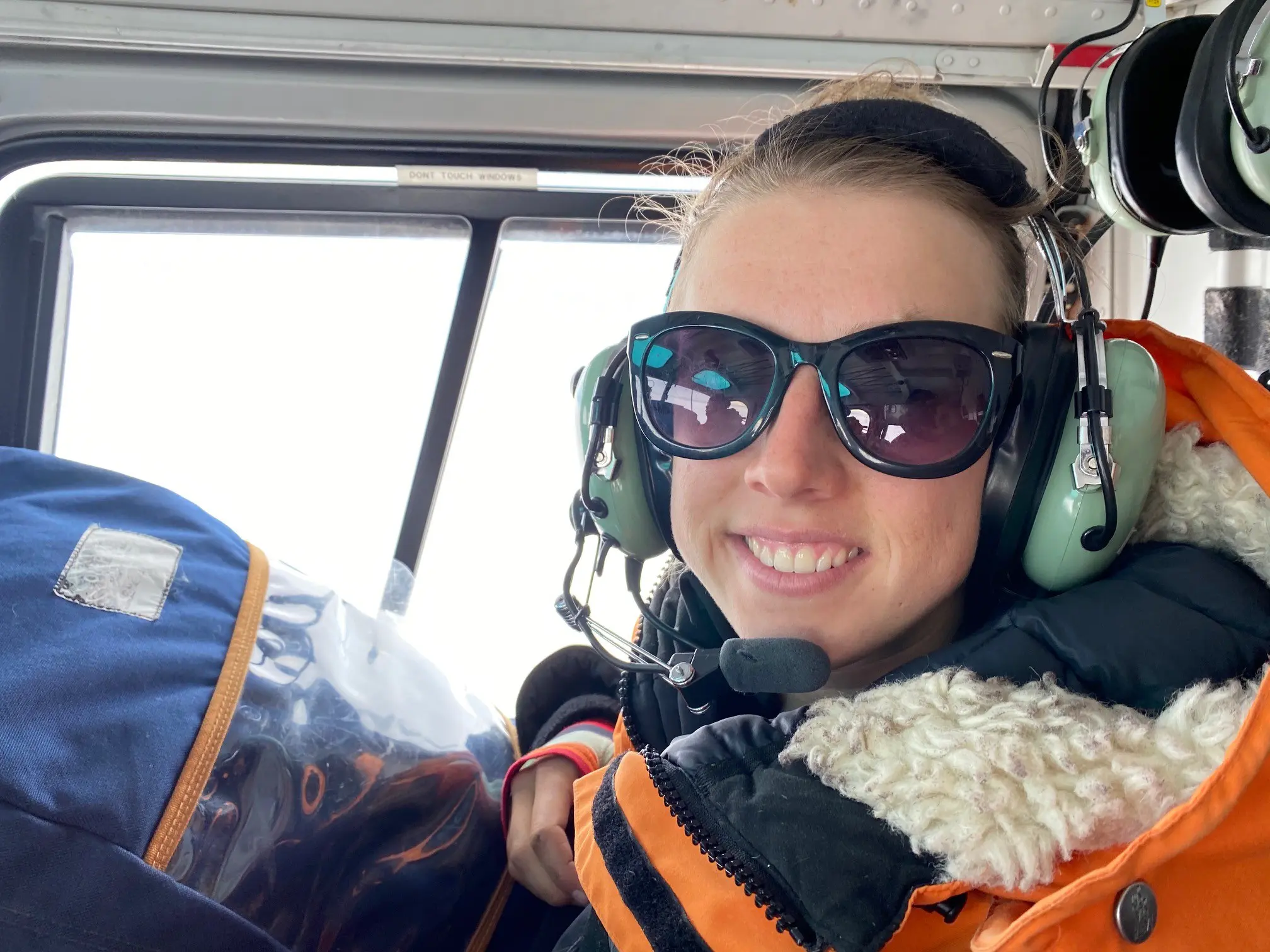BLAKE Antarctic Ambassador Rachel Worthington wasn’t sure what to study – then she discovered geology, and later oceanography, and she’s so enraptured that she wants all Kiwi kids to know about the incredible opportunities earth science presents.
“Look, hey, like if you want to get to Antarctica – earth science careers. That’s how you get down there. It’s going to get you out seeing the world. I’m 22, and I’ve been to Antarctica. Who knows where else I’ll get to go in the next 20 years of my career? Earth science is a really cool thing to study.”
BLAKE Antarctic Ambassador Rachel Worthington is back from the ice, and so glad she discovered earth science.

“Day-by-day there are different challenges on the ground,” Rachel says. “It’s snowing, streams are shifting, there are the logistics of moving around in the cold. It’s incredible.”
Rachel was selected from more than 100 applicants for the BLAKE Ambassador programme to join the SENECA project, an international research programme, with scientists from Italy, New Zealand, Norway, and Switzerland. The expedition was part of a two-year research project – a world-first attempt to estimate how much greenhouse gas is locked up in the Antarctic permafrost. It’s an important part of the climate change picture because a warming planet could melt the permafrost, releasing methane and carbon dioxide into the atmosphere, which would in turn warm the planet even further.
The six-week experience will bolster Rachel’s job prospects and networks as she catches her breath after completing her Bachelor of Science, majoring in geology and oceanography, and starts looking towards her Masters.
“Ideally I’d like to end up in some sort of Antarctic research. And this expedition shows I’ve had a challenging field experience and emerged resilient and capable. I’ve seen how Scott Base works and I’ve got an on-the-ground understanding of how a big international expedition is run and how interconnected the research community is.
“I once did some paleomagnetic analysis of samples from the Friis Hills in Antarctica, on behalf of an Italian Scientist who I had never met, and through luck I ended up on this Antarctic expedition with him! And there was another researcher on the expedition who’s papers I had used as resources in my undergraduate research. The world is small.”
BLAKE programme manager Jacob Anderson worked alongside Rachel on the expedition and says seeing young scientists embrace their first expedition is one of the joys of his job.
“When I think back to my first expedition, it was all new and my brain was in overdrive. Anyone who has worked in science remembers when they were starting their career, and the value of these experiences that give people the skills and knowledge to start their careers and go on to solve some of the important problems.”
Jacob has an earth sciences degree and a Master of Science in geology. He is working towards his PhD focusing on the past Antarctic climate and ice sheet behaviour. This was his sixth Antarctic scientific expedition and he’s taken part in two expeditions to the sub-Antarctic.
The SENECA project expedition involved 12 researchers collecting and analysing soil gas and water samples, measuring carbon dioxide and methane flux exhalation, investigating structure and composition of soil, and acquiring geoelectrical profiles to determine how much greenhouse gas is currently seeping out of the permafrost in the Dry Valleys. This will give an indication of how much greenhouse gas could be unlocked as the earth warms and parts of Antarctica melt.
“We know that in the Arctic there’s two times as much greenhouse gas locked up as there is currently in the atmosphere,” Jacob says. “We actually have no idea how much is locked up in Antarctica.”
Christmas Day on the ice involved a sleep-in, Secret Santa, a walk to the Commonwealth Glacier, and a day of feasting thanks to the culinary skills of the Italian researchers. There were pancakes for breakfast and later an abundance of delights such as five-layer sandwiches and arancini, as members of the expedition took turns to make short satellite calls home.
Rachel is grateful for her Antarctic experience – and to have found her dream career.
Stumped for direction, Rachel took a gap year after school and spent six months in an office job. This brought instant clarity. She knew then that she needed a job which included time outdoors, and variety. She took a few university papers to fill her gap year and stumbled across a riveting geology paper.
“There were so many options in geology. I was like: “That’s it!” And I fell into oceanography in a similarly accidental way. And here I am – a happy accident.
“There are so many cool places, incredible places, where you can work in earth sciences. If you’re someone who’s interested in the environment, these options exist!”
The BLAKE Antarctic Ambassador programme is in partnership with Antarctica New Zealand and GNS Science. For more information visit www.blakenz.org/programmes/blake-ambassadors




